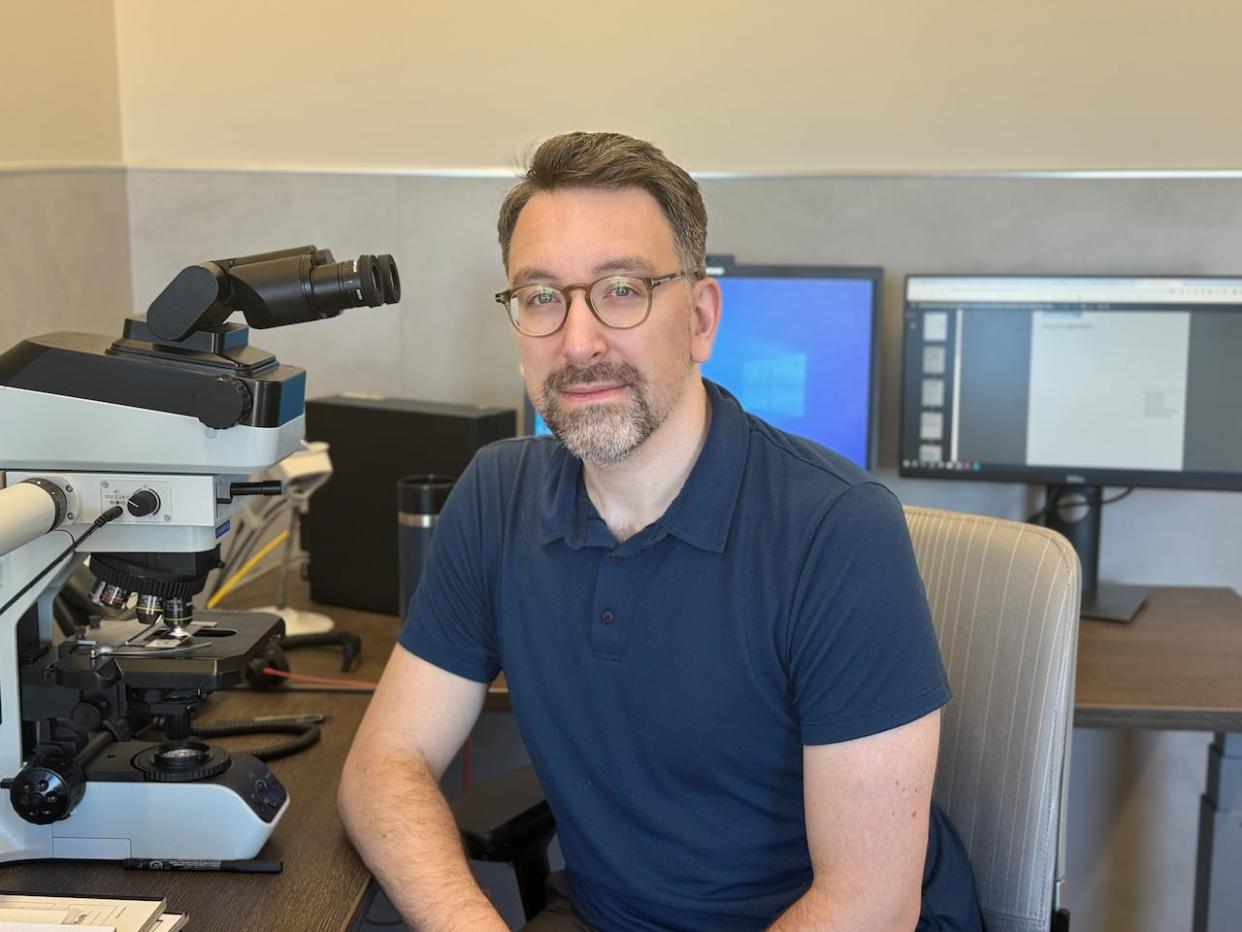Alberta pathologist shocked after name forged on fake prescriptions for oxycodone in Toronto area

A Calgary doctor recently discovered that his name was being used on forged prescriptions as they were shopped around pharmacies in Ontario.
In his work as an anatomical pathologist at the Peter Lougheed Centre, Dr. James Cotton doesn't prescribe medication or see patients. He spends most of his time behind a microscope analyzing biopsies and tissue samples.
So it came as a surprise when his pager was recently bombarded with calls from pharmacies in the Toronto area asking about suspicious prescriptions, in his name, for large quantities of oxycodone.
"It was just one after the other and it was different pharmacies from different areas of the greater Toronto region."
Along with the forged prescriptions — for 180 oxycodone tablets and another medication used to treat some cancers — there was a cover letter claiming a patient was suffering from Stage 4 cancer and had relocated to Ontario.
"It is detailed. So it seems like they do have a little bit of understanding of what might be a reason someone might need this level of prescriptions," said Cotton.
The Ontario College of Pharmacists said it has received similar reports in the past about forged prescriptions using the name of Alberta-based physicians and it alerted its members in March. The college confirmed it had been contacted by Cotton.
Alberta pharmacists have been on the lookout for fake prescriptions as well. As CBC News reported in May, prescription forgeries are on the rise in the province with nearly a third of them coming from prescribers in other parts of the country.
Cotton said he's aware of five Ontario pharmacies that caught the forgeries, and each cover letter contained small changes, including a different patient name.
"I don't even know how much work it is anymore if they can just have an AI algorithm generate them a cover letter.… It seems like they probably generated the letter once and went in and inserted different names again and again and again," said Cotton.
He recently moved back to Calgary from Ontario and wonders if his name was used because he doesn't yet have a phone number listed on the College of Physicians and Surgeons of Alberta website, making it tougher to reach him to verify the prescriptions.

Prescription pills containing oxycodone and acetaminophen are shown in this file photo. (Graeme Roy/The Canadian Press)
A number of pharmacists did track him down, including Milson Chan.
The pharmacy manager at Queen East Medical Pharmacy in Toronto said he started seeing forged prescriptions several weeks ago in the name of Alberta doctors, including a number in Cotton's name.
"The level of detail is definitely increasing. Now they're faxing it in, I guess to reduce the risk on their end as well," said Chan.
He noted that the fraudulent prescriptions he's dealt with in the past were physically brought into the store.
"I am actually surprised at the length they actually would go to get these medications.… I think Ontario pharmacies are going to start seeing a lot more of these."
According to Chan, the red flags in this case include the large volume of pills prescribed and the fact both doctor and patient are from another province, which makes tracking more difficult.
"Because of the opioid crisis that's going on, I think pharmacists have the responsibility of safeguarding the narcotics," he said.
Theft of controlled substances are supposed to be reported to Health Canada's Office of Controlled Substances.
Health Canada data shows 611 reports of forged prescriptions that were filled, or partially filled, across the country, between 2019 and 2023, with Ontario and Alberta reporting the most cases.
Ontario saw a total of 429 reports during that time period with 98 last year, down from 115 in 2022.
With 62 reports, Alberta had the second highest five-year total and cases have been on the rise since 2019.
Incidents reported to police
"This is a criminal activity.… It is illegal to forge a physician's signature on a prescription," said Dr. Monty Ghosh, an addictions specialist who teaches at the University of Calgary and the University of Alberta.
"And so it's definitely concerning from a legal perspective as well."
The Calgary Police Service confirmed the situation was reported earlier this month and that police in Ontario were informed.
"Anyone with information around fraudulent prescriptions or who believes they have been a victim of a similar incident is asked to contact police," a CPS spokesperson said in an email to CBC News.
One of the affected pharmacies is in Markham, and York Regional Police confirmed they're investigating.
"Unfortunately, frauds of this nature are nothing new and often are done across multiple jurisdictions in attempts to impede pharmacists from checking the validity of the prescriptions," a York Regional Police spokesperson said, adding no drugs were given out.
Ghosh said it's possible a group of people are trying to get their hands on oxycodone to sell it on the illicit market.
Or, it could be an individual with substance use disorder who is trying to avoid dangerous and unpredictable street drugs in favour of a safer supply, according to Ghosh.
"It might show the level of desperation that these individuals are having in relation to dealing with their substance use issues or potentially their pain issues," he said.
"They'll go to great lengths to get these prescription medications … and so it's incredibly important to be vigilant on all sides."
Meanwhile, Cotton is hoping his story will raise awareness among pharmacists and doctors.
"[For] colleagues here in Alberta and in Ontario, I guess it's something to keep an eye out for," he said.
"It seems like this is happening with more frequency."


